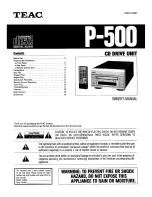
7
Startup
TCP/IP addressing and subnetworks
Manual – PROFINET IO Interfaces, Field Distributors
76
7.2
TCP/IP addressing and subnetworks
7.2.1
Introduction
The settings for the address of the IP protocol are made using the following paramet-
ers
•
MAC ID
•
IP address
•
Subnet mask
•
Standard gateway
The addressing mechanisms and subdivision of the IP networks into subnetworks are
explained in this chapter to help you set the parameters correctly.
7.2.2
MAC ID
The MAC (
M
edia
A
ccess
C
ontroller) ID is the basis for all address settings. The MAC
ID is a worldwide unique 6-byte value (48 bits) assigned to the Ethernet device. The
MAC address of Ethernet devices from SEW‑EURODRIVE is 00-0F-69-xx-xx-xx. The
MAC ID is difficult to handle for larger networks. This is why freely assignable IP ad-
dresses are used.
7.2.3
IP address
The IP address is a 32-bit value that uniquely identifies a node in the network. An IP
address is represented by 4 decimal numbers separated by decimal points.
Example: 192.168.10.4
Each decimal number stands for one byte (= 8 bits) of the address and can also be
represented using binary code (see following table).
Byte 1
Byte 2
Byte 3
Byte 4
11000000
.
10101000
.
00001010
.
00000100
The IP address comprises a network address and a node address (see following
table).
Network address
Node address
192.168.10
4
The part of the IP address that denotes the network and the part that identifies the
node are determined by the network class and the subnet mask.
Node addresses cannot consist of only zeros or ones (binary) because they represent
the network itself or a broadcast address.
22870857/EN – 12/2016
















































